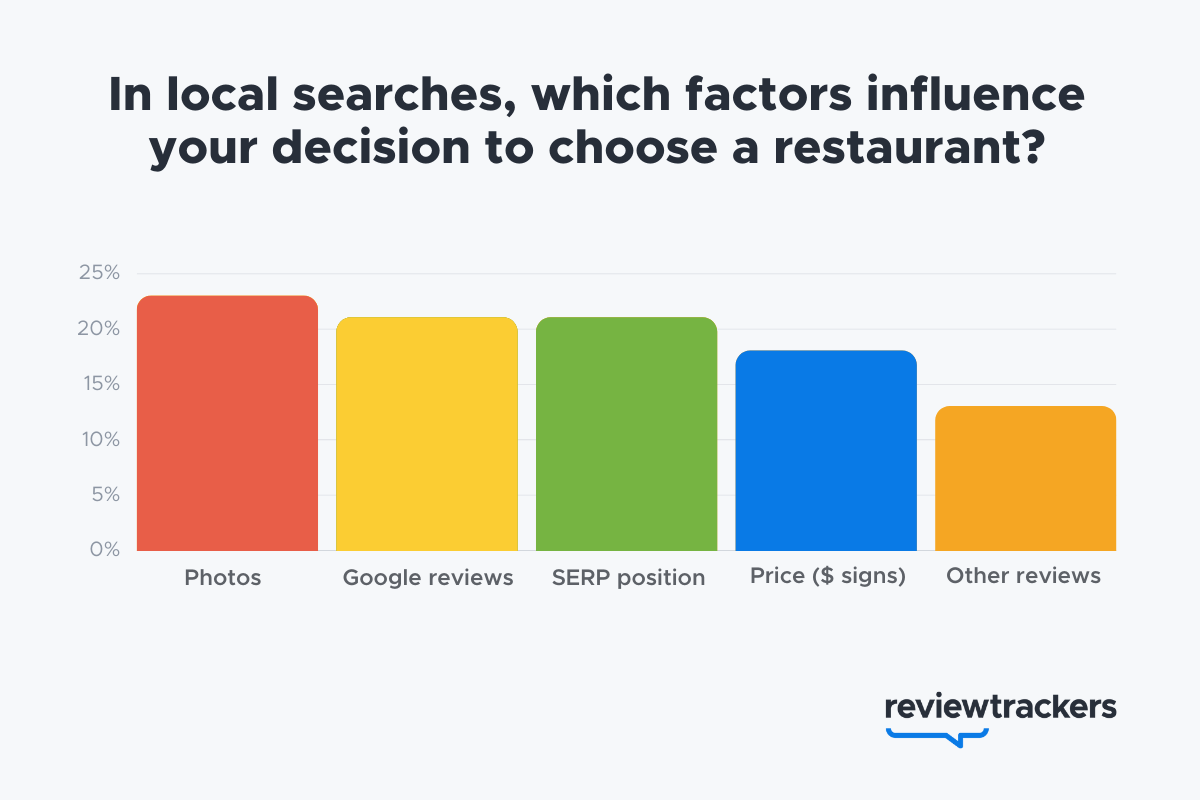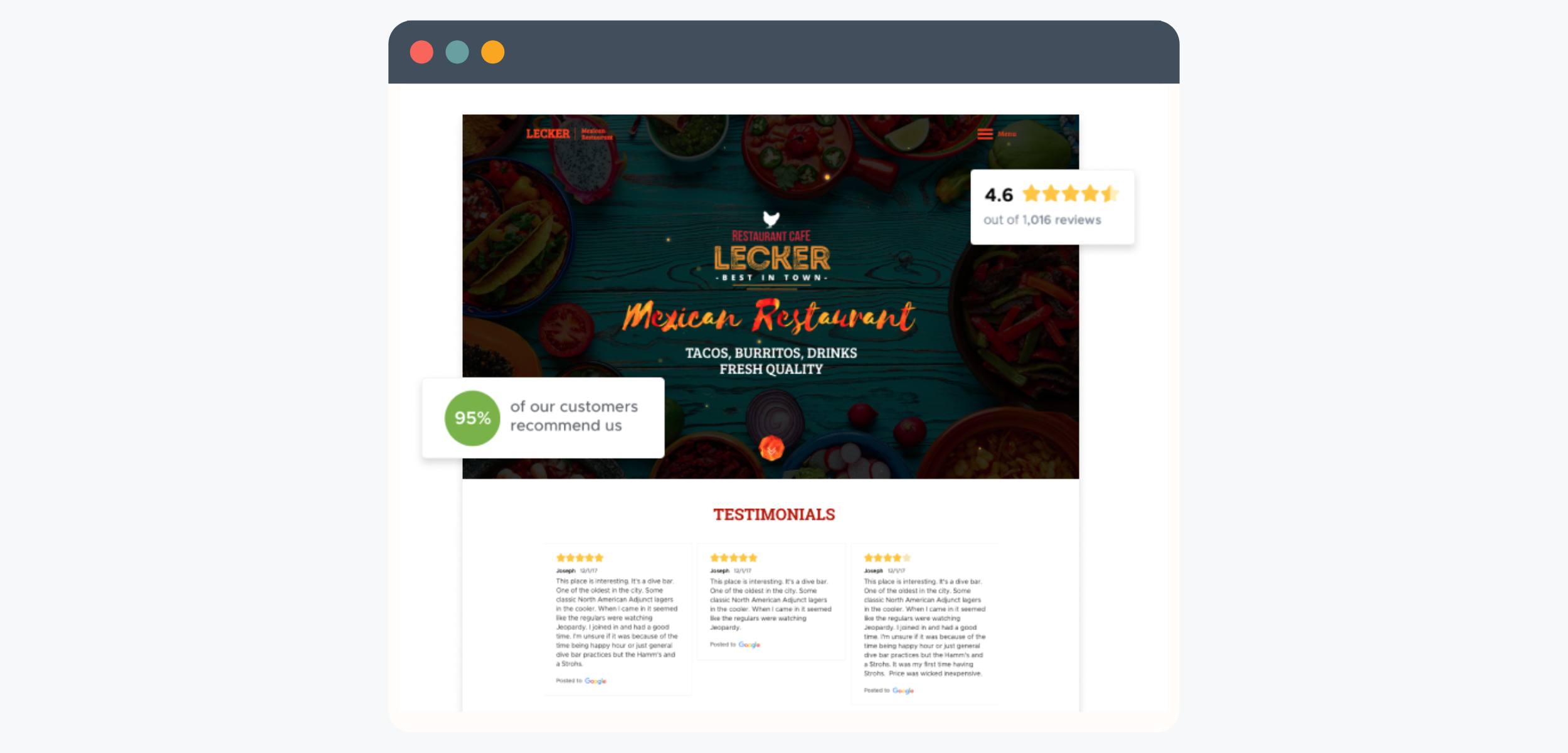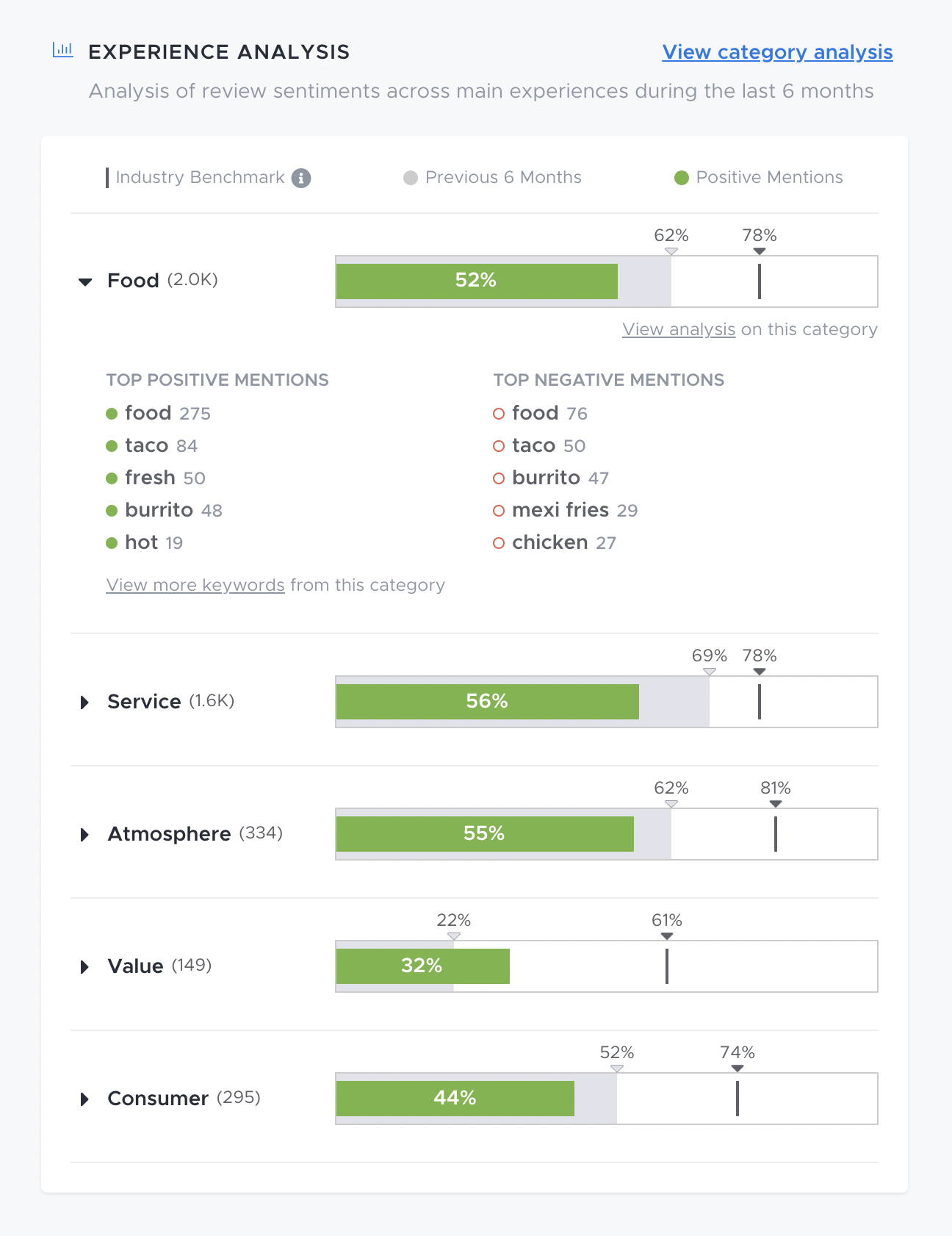Restaurateurs who keep their fingers on the pulse of evolving diner demands and expectations are the ones most poised to succeed. Given the impact that online reviews have on the restaurant industry, your business’s ability to manage reviews and customer feedback is critical. This alone can spell the difference between guest experiences that delight and experiences that don’t.
According to online reviews statistics:
- People are most likely to read reviews for restaurants and cafes over any other type of business. (IndoorMedia)
- Diners don’t trust restaurants with lower than 4-star ratings. The most common filter applied is to see only establishments with 4-star ratings and higher.
- 94% of diners in the US are directly influenced by customer reviews when deciding on a restaurant. (GloriaFood)
These stats highlight the need for restaurateurs and food service executives to have a restaurant review management strategy in place. Not only does this protect your restaurant’s brand reputation; it also helps your team keep customers’ needs at the forefront, even well before they set foot in your location or make a call for a reservation.
How Do Ratings Impact Your Restaurant’s Ability to Attract Diners?
According to findings by ReviewTrackers, 33% of restaurant-goers stated that they would not eat at a restaurant with an average 3-star review on review sites like Yelp, Google, and Facebook.
Just like in every other industry, reviews of restaurants can significantly influence consumer behavior and purchase decisions. Star ratings, in particular, serve as a convenient and accessible way for consumers to determine whether or not they will choose one restaurant over another.
Here are some other interesting findings on restaurant star ratings, based on industry research and ReviewTrackers data.
- According to customer reviews stats, restaurant guests are more likely to leave high ratings on Facebook than on any other review site.
- Customers are 43% likely to leave a review after a positive experience at a restaurant. On the other hand, after a negative experience, customers are 47% likely to leave a review.
According to a Berkeley study, a half-star rating improvement on Yelp makes it 30 to 49% more likely that a restaurant will sell out seats during its peak hours. Meanwhile, a Harvard Business School study found that a 1-star increase in a restaurant’s Yelp rating can result in as much as a 9% increase in revenue.
How to Manage Your Restaurant’s Reviews
Regardless of whether you’re managing a national franchise or a few restaurant locations, it’s clear that reviews have a direct impact on your brand reputation and revenue. What’s not always clear are the ways in which teams can most effectively manage these reviews. As diners share their experiences on online review sites and digital channels, how do you join and positively shape the conversation – with restaurant review management?
To help you get started, check out this list of best practices in managing your restaurant’s reviews.
Best Practice 1: Regularly Monitor and Respond to Reviews
At a time when diners can quickly become food critics, your restaurant must be able to monitor and respond to reviews across multiple business review sites and local listings platforms.
Google, Facebook, Google, Yelp, and Tripadvisor are some of the top sites that diners use, but pay attention as well to restaurant-specific sites like OpenTable, Grubhub, AllergyEats, and Zomato.
Learning how to respond to negative reviews and positive feedback will go a long way in helping you protect your restaurant’s brand reputation. More importantly, monitoring your reviews will also provide your business with the insights needed to consistently deliver great dining experiences.
If you represent a restaurant brand with hundreds or even thousands of locations, consider investing in online reputation management software. This allows your team to streamline your online review management workflow and consolidate operations related to reviews and reputation management.
Best Practice 2: Claim and Manage Your Local Listings
A sound local listing management strategy goes hand in hand with successfully managing your restaurant reviews.
Local listings appear in search results when people search for your restaurant online. Not only do they display your business information; they also play a vital role in determining your brand reputation, search engine rankings, and revenue.
Local listing management is a way of planting your restaurant’s flag across multiple digital properties. It’s also a critical part of being able to manage reviews: after all, you won’t be able to respond to your customers without first claiming your restaurant’s online listings and review website profiles.
As you create and claim your restaurant listings across the most important websites and directories, make sure you submit complete and correct business information. When you can, add as much information about your restaurant: business name, category, phone number, contact information, address, cuisine type, hours of operation, etc.
Best Practice 3: Ask Diners and Customers for Reviews
If you are confident about the kind of dining experience your restaurant provides, go ahead and reach out to your guests. Ask (nicely) if they would take the time to share their thoughts, opinions, and experiences on a review website where your restaurant is listed.
A steady stream of reviews contribute to the quality of your restaurant’s online listings and digital reputation. It also helps with search engine performance. Even Google has stated that reviews are one of the major ranking algorithms for search results.
Newer reviews also let potential customers know more about your company’s most up-to-date offerings and experiences. They’re an important trust factor that people look into before making a purchase decision.
According to local SEO statistics: When looking at local search results, there are a number of factors influencing consumers’ decisions about a business. Here are the top 3:
- Photos: 24%
- Google reviews: 21%
- Position on the search engine results page (SERP): 21%
As part of your restaurant’s review management strategy, establish a workflow for asking for reviews from customers. This should help improve your search engine visibility and amplify your local listings’ impact on search.
Best Practice 4: Showcase Your Best Reviews
If your restaurant consistently receives 5-star ratings and glowing reviews on third-party review websites, don’t hesitate to show them off.
As part of your restaurant review management strategy: share your best reviews on your Facebook, Twitter, and Instagram profiles, or even on your company blog. Remember: the impact of user-generated content and social proof is more powerful and effective than loud sales messages or promotional brand content.
Sharing positive reviews on social media drowns out negative noise, and it can also make a positive impact on your search visibility.
Using a reputation management software tool such as Amplify by ReviewTrackers is a great way to showcase your restaurant’s best reviews and convert casual browsers into customers. Amplify is a website review widget suite that allows you to optimize your website with fresh, relevant review content, while also ensuring that these reviews are made more accessible to people evaluating your restaurant locations.
Best Practice 5: Analyze Data from Reviews and Feedback
The smartest restaurateurs look beyond star ratings and pay close attention to the text content and unstructured data found in reviews.
Already, many industry professionals are investing in tools like customer experience analytics, natural language processing, and sentiment analysis in order to generate actionable insights about the restaurant guest experience, as well as to leverage feedback in ways that drive sales and performance.
People will always have varying definitions of what counts as a 5-star or 1-star restaurant. By analyzing in greater detail the information that comes directly from your customers, your restaurant can make smarter marketing decisions and deliver improved guest experiences.
Quick Checklist to Get Started
- Set up all your restaurant local listings on important review sites and directories: Google, Facebook, Yelp, Tripadvisor, and Apple Maps.
- Create a set of core values to enforce at all of your restaurants to provide excellent service and share with all of your restaurant managers
- Assign team members who will be responsible for monitoring and responding to reviews
- Review and respond to all of the negative reviews received within the past 3 months
- Create your first campaign to generate more reviews by sending an email to a list of customers and developing signage to be implemented at all of your locations.
Final Thoughts
It’s true that what diners say online about your restaurant can have a significant impact on others’ decisions and dinner plans. This doesn’t mean you can’t do anything about it. With a well-crafted strategy for managing your restaurant reviews, you can strengthen your brand and build a 5-star reputation that keeps diners coming back for more.


